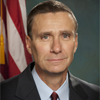All of the federal innovations, IT modernizations and smart policies won’t amount to much unless agencies hire and retain the right talent. Along with traditional skills, expertise in emerging disciplines such as artificial intelligence, data- and evidence-based decision making, and customer experience design will have increasing importance in agency operations and mission delivery systems.
Therefore, agency human capital, program and executive management must ensure that their strategies for workforce attraction, development and planning use the best contemporary practices and technologies. And, they’ve got to have effective strategies for reskilling and training in higher level skills – now the term is “upskilling” – the people they do have.
In short, a principal agency goal should be avoidance of what you might call talent disruption. And in fact many agency human resources/human capital and technology managers are instituting such best practices. Federal News Network and Cornerstone OnDemand asked a panel just such people for guidance and lessons learned.
Among the highlights: Agency managers need to be more agile in how they look at the workforce, understanding the value in mixing short term people or people in mid-career joining government, to bring in their special skills and experiences.
Managers must also take a data-drive approach to understanding the dynamics in the workforce they have, and in the people they will need in the future, in order to build cogent workforce plans.
Agencies must be willing to invest in the latest human capital tools for recruiting and presenting the agency mission in the best light to prospects. This, with the understanding that the mission itself is often the best selling point for would-be hires.
Equally important, talent and human capital is everyone’s business – program, finance, acquisition, technology and HR staffs all have an interest in and a contribution to make in good workforce planning and avoiding the talent disruption.
Current Workforce Strategy
Before the covid arrived, we had an initiative called the right, trusted, agile workforce initiative. We’re trying to make this agile workforce that works easily in and out of government. This initiative has allowed us to push forward on the ability to work with the private sector in ways we never have.
Sherry Van Sloun
Assistant Director, National Intelligence for Human Capital, Office of the Director of National Intelligence
Workforce Development and Mission Delivery
Emerging technologies “underscore in a broad sense is the importance of what are often referred to as the soft skills. And making sure we are recruiting, developing and incentivizing people that are comfortable in an environment in which they’re going to be dealing with evidence, with customers, with partnerships, and collaborations, and networks.
Chris Mihm
Managing Director, Strategic Issues, Government Accountability Office
I had this philosophy as a federal hiring manager, but it wasn’t widespread: The federal government is primarily headquartered in Washington D.C., and therefore we’ve assumed our talent pool is within the geographical constraints of D.C. or wherever the headquarters is. The covid situation has taught us our talent pool is much bigger…because we’re allowing geographically-dispersed applicants to apply.
Steve Dobberowsky
Senior Principal, Thought Leadership and Advisory Services, Cornerstone
Listen to the full show:
Copyright
© 2025 Federal News Network. All rights reserved. This website is not intended for users located within the European Economic Area.











